The Gift of Painful Feelings: The Benefits of Opening Up to Unpleasant Emotions
By Seth Shugar
Buddhistdoor Global
| 2020-02-20 | 1) Not opening up to unwanted feelings just makes things worse
When Theodore Geisel (a.k.a. Dr. Seuss) was two-and-a-half years old, his baby sister Henrietta caught pneumonia. For the next 18 months, their three-story house was filled with the sounds of the little baby coughing. Then when Geisel was just under four, little Henrietta died.
Geisel never forgot the image of his sister’s tiny casket in the music room. In his mind, it was always associated with the Pooley cabinet, a narrow New England-made chest in which his father kept their Enrico Caruso records. The cabinet, Geisel recalled, “was about the size, if you laid it on its side, of my sister’s casket. No matter how thrilled I was later by my father’s voice and my mother’s accompaniment, I always saw Henrietta in her casket in the place where the Pooley cabinet was.” (Morgan and Morgan 1996, 9)
Perhaps it was early experiences like these that made Seuss so interested in how things come to be associated, and how difficult it is to break these associations once they are formed. Near the beginning of The Cat in the Hat Comes Back, after the cat eats a cake in the bath, the red dye from his hat leaves a bright pink ring around the bathtub. To clean it up, he tries to mop up the pink ring with a dress, but it just transfers to the dress. When he wipes the dress on the wall, the stain transfers to the wall. When he cleans the wall with a shoe, the stain transfers to the shoe. And on and on it goes until, finally, he lifts his hat and unleashes little cats A through Z. The little cats represent the vast resources of language, everything that can possibly be thought, and the cats immediately set about getting rid of the stain. But all of their attempts to eliminate it not only fail, they just spread it further and further until all of the snow outside the house is stained pink.
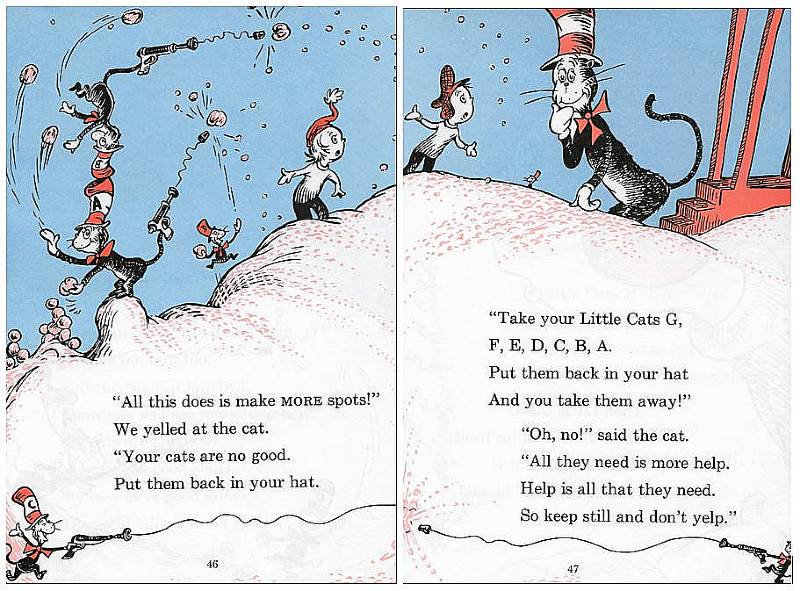
From fandom.com
This is how it goes with difficult feelings. When we try to get rid of them, by for example distracting ourselves, whatever distracting thought or activity we direct our attention to tends to become associated with the very feeling that we are trying to avoid. This is, in large part, because distraction operates according to a simple thought: “Don’t feel anxious, think of x.” But the feeling is related to x, so it tends to evoke x. This is also why research shows that if we try not to feel a bad feeling, not only do we tend to feel it more intensely, but it also causes previously neutral events to become irritating. (Cioffi and Holloway 1993) It is also why the attempt to suppress a thought in the presence of an emotion (e.g. thinking “I’m a bad parent” in the presence of regret) eventually causes the emotion to provoke the thought. (Wenzlaff and Wegner 2000) The old adages are true. What we repress returns. What we resist persists. What we avoid is redeployed.
2) Inside your pain lies your purpose
Late in his life, when a journalist asked Mahatma Gandhi about the most creative incident of his life, Gandhi told an anecdote about an experience of humiliation. During his first year working as a lawyer in South Africa, Gandhi was physically thrown off of a train for riding in first class, a right that at the time was reserved exclusively for white people. According to his biographer, Eknath Easwaran, the subsequent night Gandhi spent shivering in the darkness of the deserted train station in Maritzburg “changed his way of looking at life and its purpose.” (Easwaran 2011, 68)
Although there would be a number of inspirations in his life, more than anything else, it was staying with the indignation he felt during that cold night in the Natal mountains that helped Gandhi clarify his two most fundamental values: never to yield to force (satyagraha or “clinging to truth”) and never to use force to win a cause (ahimsa or non-violence). Inside Gandhi’s pain lay his purpose. Like the rest of us, as American clinical psychologist Steven Hayes might put it, he cared in the places he hurt and hurt in the places he cared.
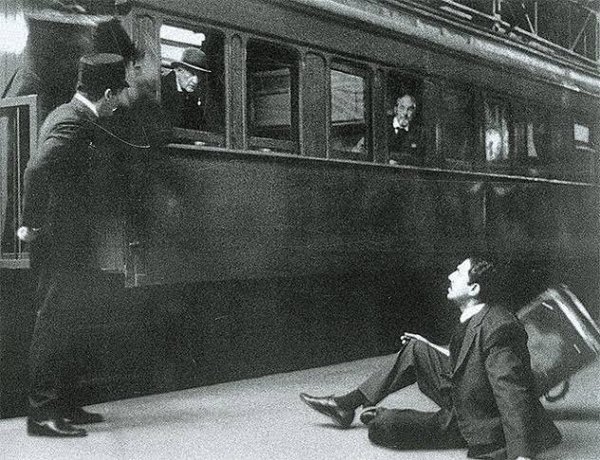
From medium.com
Nelson Mandela was renowned for his courage. Privately, he admitted that he often felt afraid, but publically he almost invariably acted bravely. (Stengel 2010) Ironically, the seeds of his bravery were sown during an experience of public embarrassment at the age of 16. He and 25 other boys of the same age were secluded in two grass huts on the banks of a river, their bodies shaved clean and coated in white ocher, as they waited anxiously for the Xhosa ritual of circumcision, a public rite of passage into manhood. After the ingcibi (a circumcision expert) performed the painful incision on the first few boys, they quickly and forcefully repeated the ritual refrain “ndiyindoda!” (“I am a man!”). When Mandela’s turn came, however, he said it was “as if molten lead was flowing through my veins.” (Stengel 2010, 37) Reeling in agony, Mandela forgot all about the refrain and just tried to absorb the shock by digging his head and shoulders into the grass wall of the hat. Eventually, he recovered and managed to proclaim, “I am a man!” But when he recalled this incident 60 years later, his eyes dropped to the ground and he said, “I faltered. I did not yell it out in a firm voice.” (Stengel 2010, 37) Yet Mandela also acknowledged that it was this event that repeatedly prompted him, throughout his life, to act bravely even in the presence of intense fear.
3) It allows your pain to transform
The renowned Tibetan Buddhist teacher Pema Chödrön was once on a retreat with another woman who hated her. (Kullander 2005) The experience unleashed such intense feelings inside Pema that she was unable sleep. Chödrön tried all the meditation techniques she’d been teaching for years, but nothing helped. So one night, after tossing and turning, she went up to the meditation hall and just sat there all night long in her raw pain. Chödrön said she wasn’t even really meditating; she was just staying with the pain because it was so intense she could barely move. “And then,” she related, “something happened, transformative.” She had a completely clear insight that her whole ego-structure—the way she smiled, the way she talked to people, the way she tried to please everybody—was an elaborate attempt to avoid feeling the raw, painful feelings with which she had been sitting. So what happens once you become willing to allow those feelings? “Basically,” she said, “you get pretty fearless. Because then there’s nothing to hide, and you’re no longer invested in the ignorant dance of trying to move away from it constantly, all the time.” (Kullander 2005)
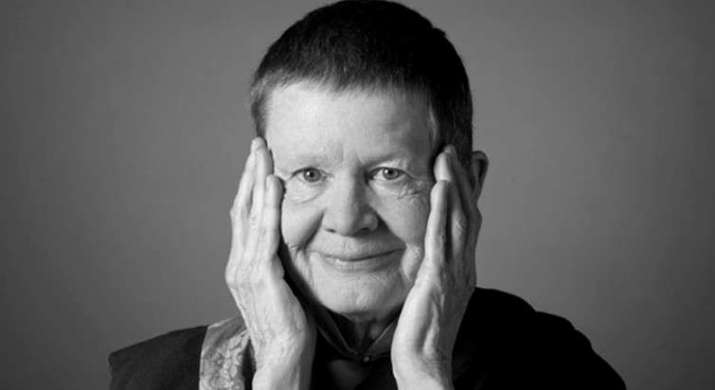 From ramdass.org
From ramdass.orgOne of the most transformative moments of American meditation teacher Joseph Goldstein’s meditation practice happened when he found himself lost for several days in recurring feelings of intense fear. (Goldstein 2018) He tried to remain aware of the feelings as they arose, labeling them “fear, fear,” but he still felt caught in the intensity of the emotion. Then, at a certain point, something shifted within him and Goldstein said to himself, “If this fear is here for the rest of my life, it's OK” This, Goldstein said, was his “first moment of genuine acceptance,” and it completely changed his relationship with fear. “Although the fear continued to arise,” he wrote, “I was no longer locking it in with my resistance. Genuine mindful acceptance allowed the fear to just wash through.” (Goldstein 2018)
4) It increases your confidence
The influential renaissance philosopher Michel de Montaigne is usually characterized as an extraordinarily robust and cheerful human being. Yet there was a period in his thirties when Montaigne became absolutely obsessed with morbid fears of death. (Bakewell 2011) If you read a bit about his life, this doesn’t exactly come as a shocker. When he was 30, Montaigne watched his best friend La Boétie die of the plague. A few years later, Montaigne sat at his father’s bedside while he died in agony from kidney stones. A year after this, his younger brother was hit on the head with a tennis ball and died. Then, when his first-born daughter was just two months old, she also died. Is it any wonder that Montaigne found himself asking, “How can we possibly rid ourselves of the thought of death and of the idea that at every moment it is gripping us by the throat?” (Montaigne 2003, 2:112)
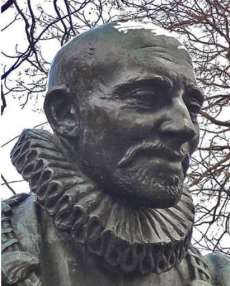 Michel de Montaigne. Image courtesy of the author
Michel de Montaigne. Image courtesy of the authorThen one afternoon, at the age of 36, Montaigne was riding on horseback with a group of servants through the woods outside his estate when a muscular man on a powerful horse behind him decided to show off. Goading his horse into a full gallop, the man tried to pass Montaigne on the narrow forest trail and instead accidentally smashed into him from behind at full speed. Montaigne’s horse was knocked over and Montaigne went flying though the air, and was knocked unconscious the instant he hit the ground. When he came to, Montaigne was writhing in agony, tearing at his doublet. Everyone, including Montaigne himself, was certain he was going to die. And yet, it was in large part thanks to this painful experience that by the time he reached his forties Montaigne had become a lighthearted and carefree human being.
How come? Because this experience made him realize that he had naively assumed that dying would be painful, when in actual fact he found it “not only free from distress, but mingled with that sweet feeling that people have who let themselves slide into sleep.” Ultimately, Montaigne concluded, “In order to get used to the idea of death, I find there is nothing like coming close to it.” (Montaigne 2003, 2:331)
The same proved true of Montaigne’s second-greatest fear: kidney stones. Although his father lived to the age of 66 in great health, after he developed inoperable kidney stones he suffered his last seven years in utter agony, “painfully dragging out the last years of his life,” as Montaigne said. (Montaigne 2003, 2:228) Indeed, it was with his father’s excruciating bout of kidney stones in mind that Montaigne wrote: “The fear of this illness used to frighten me when I did not know it except by the cries of those who could not bear it.” (Montaigne 2003, 2:213)
So when, late in life, Montaigne suffered the same kidney stone condition that had killed his father, he was incredibly surprised and heartened to discover that “I had conceived them in imagination so unendurable that, in truth, I had more fear of them than I have found pain in them.” (Montaigne 2003, 2:37) Indeed, Montaigne realized that he had considered “the thought of illnesses so horrible that when I came to experience them I found their pains mild and easy compared with my fears.” (Montaigne 2003, 2:6:325) Ultimately, Montaigne even came to regard the pain they caused him as the “necessary medicine” that cured him of his fear of them. As his esteemed biographer Donald Frame writes: “Now for the first time Montaigne appears entirely free from fear. Never before has he shown such complete confidence, and never from now on will he lose it.” (Frame 1967, 211)
5) It energizes and enlivens you
In order for Bruce Wayne to become the Batman, it was not enough that he spent years training to become a warrior in a remote, snow-clad monastery. No, the real transformation only came when he returned to the cave full of bats that terrified him as a child. It is the most beautiful scene in the movie Batman Begins (2005). After re-entering the bat cave, Wayne crouches down in the swirling black cloud of bats, his shoulders scrunched to protect his core. Then, slowly, he stands fully upright, lets his arms fall to his sides and extends his chest, opening himself completely not just to the swarm, but to all the feelings of fear they arouse in him. Does this cause his feelings of fear to subside? No. When Alfred later asks him why he chose bats as his superhero totem, Wayne says: “I want my enemies to share my dread.” But it does give him the closest thing to a superpower he’ll ever have: the ability to tap into the ancient energy of his fear and channel it in the pursuit of justice.
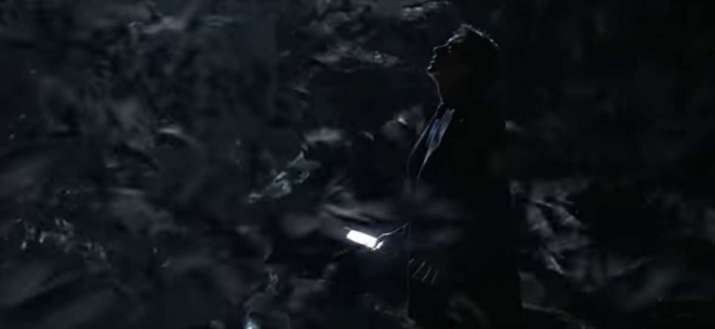 From youtube.com
From youtube.comNo mud, no lotus. No fear of bats, no Batman.
In the early Buddhist tradition, the third of the “seven factors of awakening” is energy. (Samyutta Nikaya, 46.14) It follows on the heels of the first two factors: mindfulness and investigation. When we develop the ability to open up to our feelings in a curious, accepting way (mindfulness) and then explore and scrutinize the nature of these experiences (investigation), it unlocks a tremendous amount of vitality. This energy is part of what awakens us, in part by literally waking us up.
Peter Levine makes a similar point about working with trauma. When we get trapped in situations we perceive to be life-threatening, our bodies mobilize an enormous amount of energy so that we can fight, take flight, or freeze. (Levine 2005, 54) Blood pumps to our muscles and our brains spurt stress hormones like cortisol and norepinephrine. But if our survival responses are blocked, this energy can’t be discharged and it winds up being stored in our nervous systems. As Levine says, however: “When this stuck energy is restored to the whole organism, we can begin to live more fully—to create, accomplish, communicate, collaborate, and share.” (Levine 2005, 58) Why? Because “we have access to all the energy previously bound up in our freezing and immobility, in our incomplete fight and flight response.” In fact, Levine observes that trauma is often a “pathway” or “portal” to the process of awakening. (Levine 2005, 80)
6) You have to feel it to heal it
Remember the climax of the movie Good Will Hunting (1997)? Will can’t get in his beater and drive to California to go and “see about a girl” until he’s willing to weep like a child in Sean’s arms. It’s obviously important for him to hear Sean repeat, “It’s not your fault.” He needs to be reminded that he didn’t do anything to deserve his feelings of shame or his fears of abandonment. But it is not until Will breaks down that he finally breaks through. To heal, Will has to be willing.
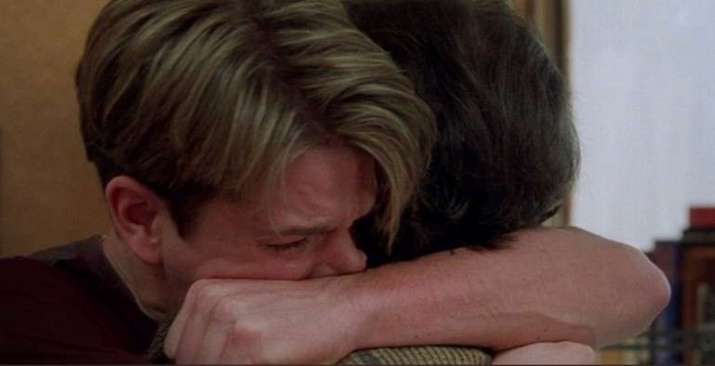 From youtube.com
From youtube.comThere’s an adage that says you can’t heal what you can’t feel. One of the most effective ways of healing unhealthy feelings is by means of a process that Les Greenberg, the pioneer of emotionally focused therapy, calls “the transformation of emotion by emotion.” (Greenberg 2010, 36) Whereas thinking usually changes thoughts, it is feelings that change our core emotions. Charles Darwin understood this. He seems to have been the first person to observe: “An emotion cannot be restrained nor removed unless by an opposed and stronger emotion.” (Greenberg 2010, 36) To transform our deepest and most difficult feelings, we must first allow them in and welcome them. Then, while they are active, we can, if we wish, summon other more adaptive emotional states to soothe and undo them.
If, like Will Hunting, for instance, our core maladaptive emotions are shame and fear, like Will we would do well to allow these feelings fully and then activate incompatible, adaptive emotions such as self-compassion. This is precisely what Sean provides: he gives Will the “good will” for which good Will Hunting has been hunting. As recent research in the exciting field of memory reconsolidation shows, this doesn’t just attenuate the old emotional responses; it undoes them. (Ecker 2018) But as Les Greenberg repeatedly points out, “People must first arrive at a place before they can leave it.” (Greenberg 2010, 36) In other words, you’ve got to feel it to heal it.
7) It increases your compassion, for self and others
The Japanese art of kintsugi, or "golden joinery,” involves repairing broken pottery by repairing the cracks with gold lacquer. As a philosophy, kintsugi treats cracks and imperfections not as shameful weaknesses to be concealed or denigrated, but as valuable experiences to be revealed and celebrated. Among other things, the gold lacquer symbolizes the compassion with which we can mend our own cracks. When we respond to them in this way, the fissures inside us are transformed from something that devalues the vessel to something that adds beauty and value and strength. As Leonard Cohen famously sang: “There’s a crack, a crack, in everything. / That’s how the light gets in. / That’s how the light gets in.” It is, ultimately, our cracks that illuminate and enlighten us; in this sense, as well as others, they are indeed golden. Hemingway said, “Life breaks everyone, but some are strong in the broken places.” It’s the power of self-compassion that makes the broken places strong.
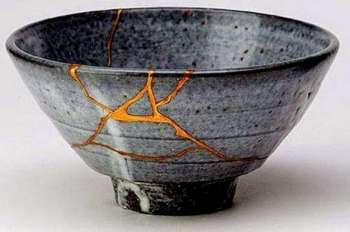 From austinkleon.com
From austinkleon.comThe renowned Thai forest monk Ajahn Chah once enumerated all the things he loved about a plain glass of water that was standing beside him.
Ajahn Chah said he loved how well the glass held water. He said he loved the way it reflected the light when the sun shone on it. He said he loved the ringing sound it made when he tapped it. “Yet for me,” he observed, “this glass is already broken. And when I understand that it is already broken, every minute with it is precious.” (Epstein 2008, 114)
In her beautiful poem, “Kindness,” Naomi Shihab Nye writes: “Before you know kindness as the deepest thing inside / You must know sorrow as the other deepest thing.” If we’re not willing to experience our own sorrow, we can’t connect with others when they are in distress. You can’t spot what you haven’t got. But when we become acquainted with our own suffering, and then contact the universal nature of suffering itself, what wells up inside of us is a deep sense of kinship with, and kindness toward, all beings. What if each difficult feeling is not another stone in the wall that isolates us, but another brick in the bridge that connects us with all sentient beings?
References
Bakewell, Sarah. 2011. How to Live: Or A Life of Montaigne in One Question and Twenty Attempts at an Answer. New York: Other Press.
Cioffi, D., and J. Holloway. 1993. Delayed Costs of Suppressed Pain. Journal of Personality and Social Psychology 64: 274–82.
Ecker, Bruce. 2018. “Clinical translation of memory reconsolidation research: Therapeutic methodology for transformational change by erasing implicit emotional learnings driving symptom production. International Journal of Neuropsychotherapy, 6(1), 1–92.
Easwaran, Eknath. 2011. Gandhi the Man: The Story of his Transformation. Tomales, CA: Nilgiri Press.
Epstein, Mark. 2008. Psychotherapy Without the Self: A Buddhist Perspective. New Haven, Connecticut: Yale University Press.
Frame, Donald. 1967. Montaigne’s Discovery of Man: The Humanization of a Humanist. New York: Columbia University Press.
Goldstein, Joseph. 2018. “Three Means to Peace: Mindfulness, Compassion, and Wisdom.” Lion’s Roar. February 2018. https://www.lionsroar.com/three-means-to-peace/
Greenberg, L. S. 2010. Emotion-focused Therapy: A Clinical Synthesis. Focus, 8, 32–42. http:// focus.psychiatryonline.org/cgi/reprint/8/1/32
Levine, Peter. 2005. Healing Trauma: A Pioneering Program for Restoring the Wisdom of the Body. Boulder, CO: Sounds True.
Morgan, Judith and Neil Morgan. 1996. Dr. Seuss & Mr. Geisel: A Biography. Boston: Da Capo Press.
Montaigne, Michel de. 2003. The Complete Works. Trans. Donald Frame. London: Everyman’s Library.
Kullander, Justin. “Sitting In The Fire: Pema Chödrön On Turning Toward Pain.” The Sun. January 2005, 5–11.
Stengel, Richard. 2010. Mandela's Way: Lessons for an Uncertain Age. New York: Broadway Books.
Wenzlaff, R. M., and D. M. Wegner. 2000. Thought Suppression. Annual Review of Psychology 51: 59–91.
Related features from Buddhistdoor Global
You Can Change the Past: Using Active Mindfulness to Rescript Difficult Memories
The Missing Self in Buddhism and Psychology
Josh Korda: Where Buddhism, Life, and Psychology Meet
Buddhist Psychology for the Modern World: An Interview with Lene Handberg
Procrastination, Determination, and Compassion
More from Art of Living by Seth Shugar






















